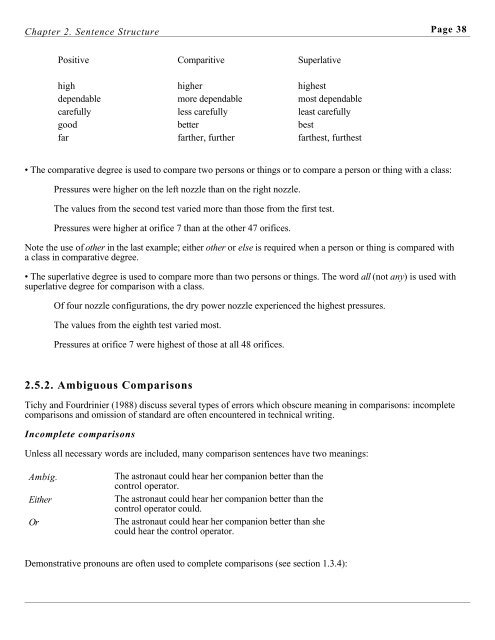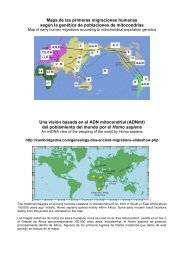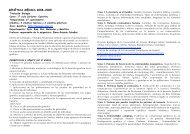Grammar, Punctuation and Capitalization - Handbook for Technical ...
Grammar, Punctuation and Capitalization - Handbook for Technical ...
Grammar, Punctuation and Capitalization - Handbook for Technical ...
You also want an ePaper? Increase the reach of your titles
YUMPU automatically turns print PDFs into web optimized ePapers that Google loves.
Chapter 2. Sentence Structure Page 38Positive Comparitive Superlativehigh higher highestdependable more dependable most dependablecarefully less carefully least carefullygood better bestfar farther, further farthest, furthest• The comparative degree is used to compare two persons or things or to compare a person or thing with a class:Pressures were higher on the left nozzle than on the right nozzle.The values from the second test varied more than those from the first test.Pressures were higher at orifice 7 than at the other 47 orifices.Note the use of other in the last example; either other or else is required when a person or thing is compared witha class in comparative degree.• The superlative degree is used to compare more than two persons or things. The word all (not any) is used withsuperlative degree <strong>for</strong> comparison with a class.Of four nozzle configurations, the dry power nozzle experienced the highest pressures.The values from the eighth test varied most.Pressures at orifice 7 were highest of those at all 48 orifices.2.5.2. Ambiguous ComparisonsTichy <strong>and</strong> Fourdrinier (1988) discuss several types of errors which obscure meaning in comparisons: incompletecomparisons <strong>and</strong> omission of st<strong>and</strong>ard are often encountered in technical writing.Incomplete comparisonsUnless all necessary words are included, many comparison sentences have two meanings:Ambig.EitherOrThe astronaut could hear her companion better than thecontrol operator.The astronaut could hear her companion better than thecontrol operator could.The astronaut could hear her companion better than shecould hear the control operator.Demonstrative pronouns are often used to complete comparisons (see section 1.3.4):






